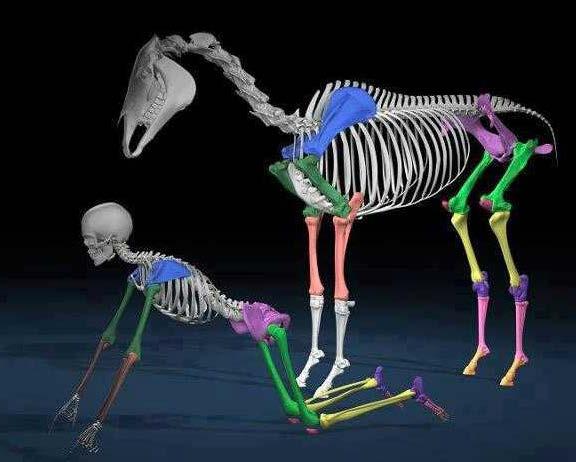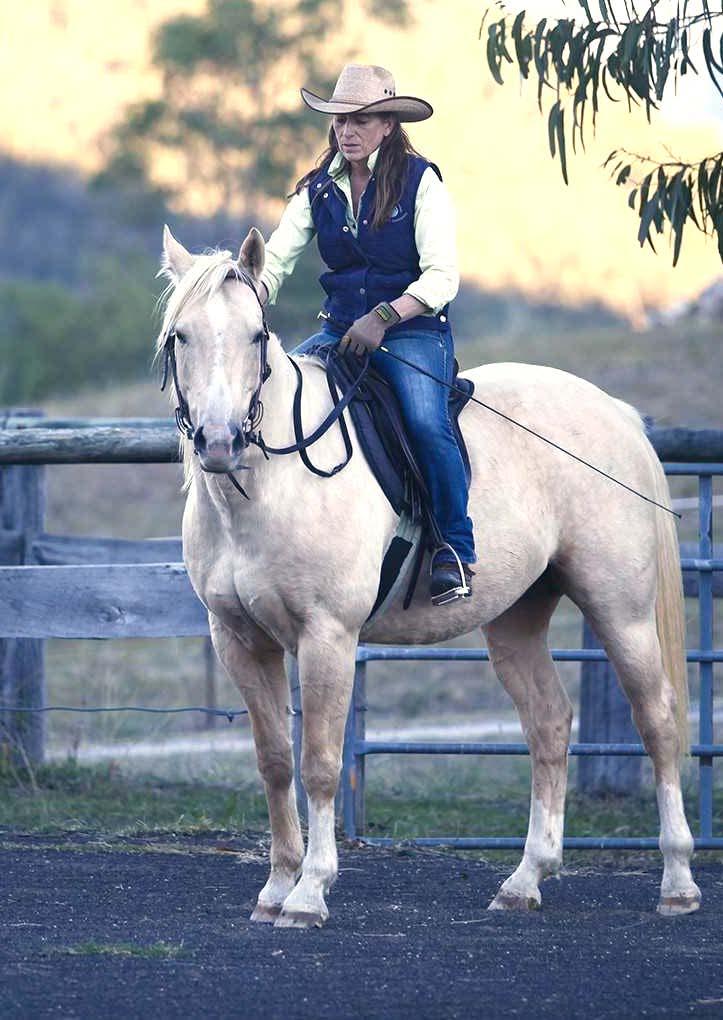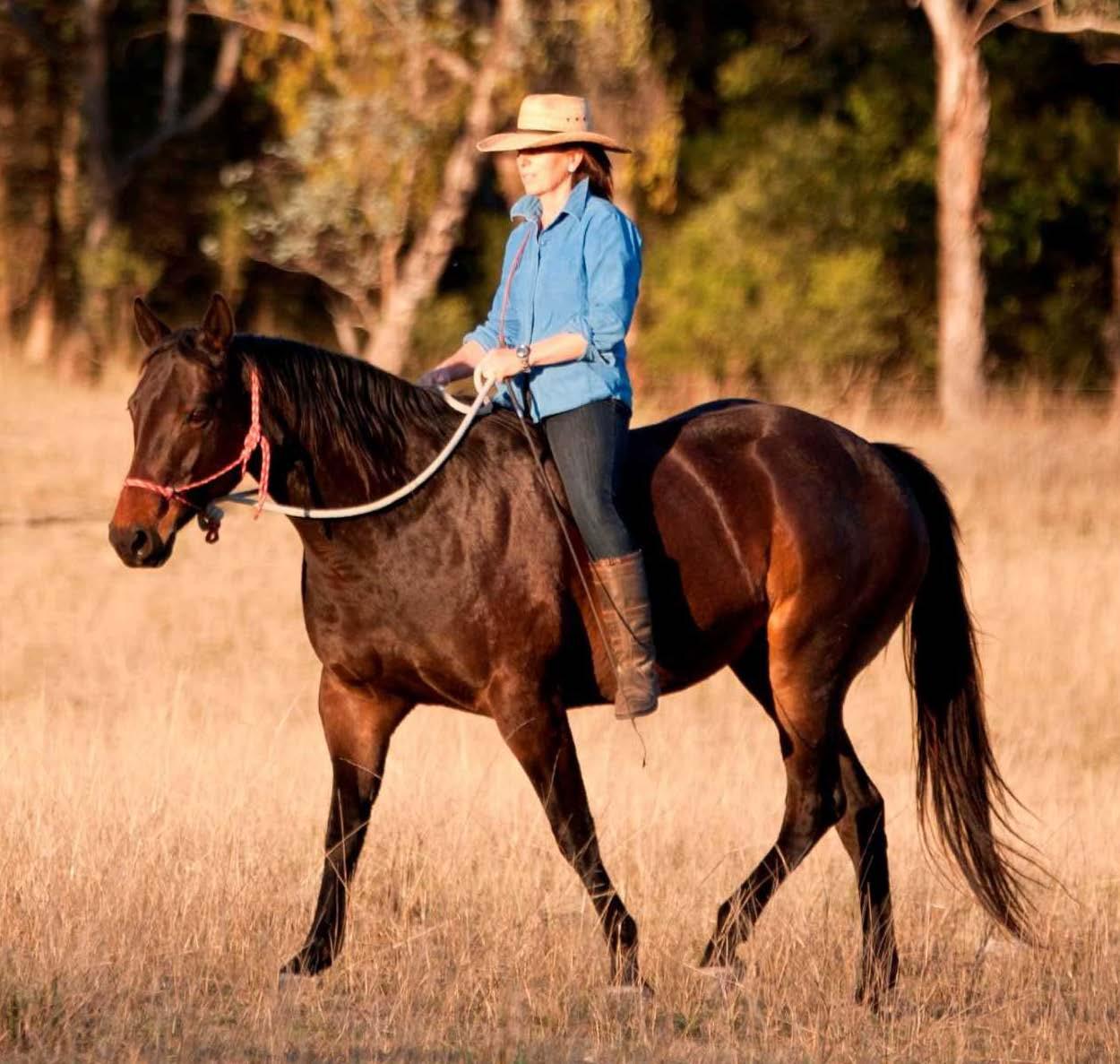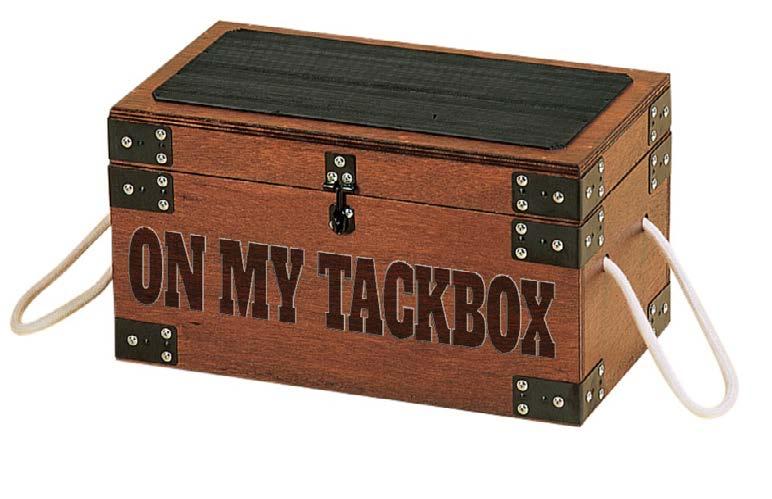
9 minute read
ON MY TACKBOX WITH MEL FLEMING
Why do biomechanics matter?
Connecting with Horses and Riding with Synchronicity creator MEL FLEMING explains the importance of good biomechanics and why it is important for ALL horses and essential to having an ‘easy’ relationship with your horse.
Biomechanics is the study of the structure, function and motion of the mechanical aspects of biological systems. It’s more commonly thought of as the science of movement of a living body - including how muscles, bones, tendons, and ligaments work together to produce movement. We all know that elite athletes and sports people are continually studying biomechanics to improve their performance and prevent injury. Good biomechanics result in maximum performance (strength, power and endurance) with minimal effort and the least amount of strain and stress on the body. Biomechanics and horses
If you were an elite competitor in any equestrian discipline you could easily understand why biomechanics would be important. But you may be asking why does it matter if I’m just a pleasure rider? I’m here to tell you good biomechanics matter for every horse and will keep your horse happy, healthy and sound – and it will do the same for you too.
Healthy biomechanics means that the horse will be in a state of softness where the back is supple and all joints act as good shock absorbers. Poor biomechanics cause horses to be rigid, stiff legged and jarring, which is very uncomfortable for both horse and rider.
Poor biomechanics is often referred to as a horse being unbalanced, ‘on their forehand’, ‘pulling themselves along with their front legs’ or moving in a ‘disengaged state’. Good biomechanics means a horse is balanced and engaged, that is, pushing with their hindquarters to get forward propulsion and carrying a bigger proportion of their weight and that of the rider and the saddle with their hindlegs.
A horse that is too heavily on the forehand is like driving a car without power steering or even worse a car with two flat front tyres - so he/she will be harder to steer and manoeuvre around. Being on the forehand is a big contributor to why horses are heavy on the reins. However, a light horse does not always equal correct biomechanics as horses can get their weight back in a healthy biomechanical way or an unhealthy biomechanical way and unfortunately the latter is what more often happens.
Diagram illustrating the biomechanics of a horse and a human.
Mel Fleming training a horse to be soft in the front. Photo: Candida Baker


Health and general wellbeing
Incorrect biomechanics affects the horse’s health and general wellbeing. • For example the digestive, respiratory, nervous system and reproductive system can be affected.
When the muscles surrounding the internal organs or structures of the body are in a state of tension, it affects the positioning and the functioning of the internal organs. • It damages structures – for example, feet, joints, ligaments, tendons and muscles. • It affects the energy flows throughout the horse’s body and their overall condition. • Postural issues that cause stress, strain, damage and pain, will, over time, lead to mental and emotional stress which will also break down your relationship with your horse.
Your horse won’t understand why you continue to ask him or her to do things that feel so wrong, uncomfortable or painful and why you don’t understand or care how they are feeling!
The good news is that in the vast majority of cases all these things are repairable, even in older horses, as long as the damage done is not too extreme. The sooner we can change things the easier it is to fix.

Healthy biomechanics make your horse happier
Much of the resistance, brace, or so called “bad behaviour” that people experience with their horses, come from the fact that horses are not comfortable, even to the point of pain. When moving with healthy biomechanics things feel relatively effortless and easy. With incorrect biomechanics a simple thing can feel hard, tiring and strenuous which equals discomfort or even pain. Understanding this can help people understand why their horse is not volunteering and putting their hand up to go for a ride. Riding a happy, willing horse in a good state of balance is a very enjoyable experience. When a horse is in the ultimate state of balance, “ready and poised to go in any direction at any time” and they are calm and at the same time alive and full of energy, wanting to do what you want to do, that is an incredible feeling.
A
A: The centres of both horse and rider. B: Identifying good biomechanics. Most people just look at the head and neck but we need to look at the rest of the body. A few key things are: The horizontal line (spirit level) - Is it level, uphill or downhill? The front leg in the maximum weight bearing stage - Is it vertical or sloping backwards ? The hind leg in its maximum weight bearing stage – how far forward in front of the stifle is it ?
B
You can’t force a horse into healthy biomechanics
It all starts with a calm state of mind and relaxed emotional state for both horse and rider. It takes time to develop new neural pathways and then build the correct muscles. It is not a short process – we are talking weeks, months
C

and years if you are thinking about elite levels of competition. But, if you are using the correct approach, you will start seeing small changes in your horses immediately.
Truly correct biomechanics comes from deep relaxation of both horse and rider – when the body is deeply relaxed but at the same time alive and full of energy. I call it being ‘centred’, a term used in martial arts - often explained as the unification of the mind, body and spirit. It is a state of mental and emotional stillness and calmness. From this place true power and athleticism can be found just as it is in martial arts. Biomechanics for different breeds and disciplines
The basic skeletal structure for all horses is the same whether we are looking at a mini, a draft horse or anything in between; therefore the same fundamental principles of biomechanics apply to all breeds and to all disciplines.
At a more advanced level of training in the different disciplines there will be some different frames or outlines, depending on the degree and type of engagement needed. The most minimal levels would be for trail riding horses, maximum levels would be for highlevel dressage, showjumping or cutting horses. The horse’s frame or outline (height and length of neck for example) will differ depending on whether they need more upward push of the hindlegs - for piaffe, or passage, for example, or whether they need the more forward push of a racehorse. However, within these differences the basic principles still apply. Biomechanics doesn’t need to be complicated
Some teachers make the subject sound very complicated, using complicated anatomical names and terminology. The power and the truth is in the simplicity and in doing simple things with great quality. Learning a conceptual understanding of biomechanics combined with a basic understanding of the skeleton will help you develop an eye for what is correct. The hard thing is that commonly what people see is not correct, and sometimes, even when people are using the right words and terminology, the end results are mostly still not correct. So how can you ‘feel’ if
Your horse gives you the feedback
Soft and smooth, rhythm and flow, effortless – these key words will tell you when you are on track.
Softness means softness in everything – • Soft mind and emotions - this is not a weakness but the centred way of having a strong focus. This focus does not have the intensity, rigidity or the inflexibility of the hard focus.
It is the focus that elite martial artists have. • The muscles look and feel soft • The joints look soft and the feet look and sound soft on landing • Soft eyes
The rhythm needs to be regular and not stop/start, or speeding up and slowing down.
The most important factors for correct biomechanics
• Mental and emotional state - this is the number one priority. If the horse is stressed (or in any negative emotional state) they are not
“centred” and therefore will not be operating from their centre - which equates to not operating from their hind end. • Saddles blocking movement of the back • Soundness and health • Existing postural patterns – genetic or conditioned • Riders position, balance and aids You and your horse will both enjoy yourselves more
Most people get into horses because they want to have fun, enjoy themselves and share a wonderful relationship with the powerful magnificent being that the horse is.
When we are trying to force the horse into something it is never going to be an enjoyable experience for us or them.
C: Good biomechanics leads to athletic performance horses. D: Good biomechanics makes pleasure riding pleasurable.

D
Most people never really experience how good riding or working with horses can really feel. In fact for many people, the experience is often unpleasant and a struggle - they may feel pain or discomfort when they ride, or horse and rider are resisting each other, or they feel fear, or that riding is hard work and exhausting through either trying to make a horse go or trying to hold a horse back. For most people it doesn’t feel like harmony and effortlessness and ease.
Riding or ground work/play shouldn’t feel like a struggle or battle between you and the horse, even in the process of teaching your horse. I’ve personally experienced the struggle. I know how bad it feels in comparison to the joy and effortlessness and ease you experience with a happy horse and a willing partner who becomes your best friend in the process.

The relationship and the connection with your horse should improve immensely with training including things like the horse being easy to catch, bridle and saddle – not because there are consequences if the horse doesn’t comply, but because they want to participate. If this is not happening then something in your training or the training system you are following is not working. During training your horse should become more interactive, friendly, curious and affectionate with you, their body should look more and more magnificent and they should become more proud of themselves, and by extension you will become proud of yourself as well!
You can learn more from the website and by attending courses. Mel also recommends the recently published book by Karen E. Morris, The Horse’s Voice: How Kind Can Horsemanship Become?










